Researchers in Michigan State University’s Developmental Speech Lab have codeveloped virtual reality, or VR, simulations to understand how stuttering develops in young children with the goal of improving diagnostic and treatment approaches for children who stutter.
Tag: Virtual Reality
JMIR XR and Spatial Computing is inviting submissions for a new theme issue titled “First Look: Early Research, Viewpoints, and Experiences with Apple Vision Pro in Health Care Settings”
JMIR Publications invites submissions to a new theme issue titled “First Look: Early Research, Viewpoints, and Experiences with Apple Vision Pro in Health Care Settings” in its new open access journal JMIR XR and Spatial Computing.
Light emission from nanostructures, revealed using 3D printing method for the first time
Dr. Jaeyeon Pyo’s team at the Korea Electrotechnology Research Institute has revealed light emission patterns from 3D-printed nanowires, expecting technological innovation in ultra-high resolution displays, published as a cover article in ACS Nano.
High ceilings linked to poorer exam results for university students
Ever wondered why you performed worse than expected in that final university exam that you sat in a cavernous gymnasium or massive hall, despite countless hours, days and weeks of study? Now you have a genuine reason – high ceilings.
Brave new virtual world fast becoming a reality in the mining sector
A virtual and robotic revolution in Australia’s mining industry could spell the end of fly-in-fly-out (FIFO) workers within a decade, according to one of the country’s leading geologists and immersive technology experts.
Beyond Therapy: Virtual Reality Shows Promise in Fighting Depression
Study reveals VR’s potential in revolutionizing depression treatment, offering hope to millions worldwide.
VR Poses Privacy Risks for Kids. A New Study Finds Parents Aren’t as Worried as They Should Be.
New research finds that, while an increasing number of minors are using virtual reality (VR) apps, not many parents recognize the extent of the security and privacy risks that are specific to VR technologies.
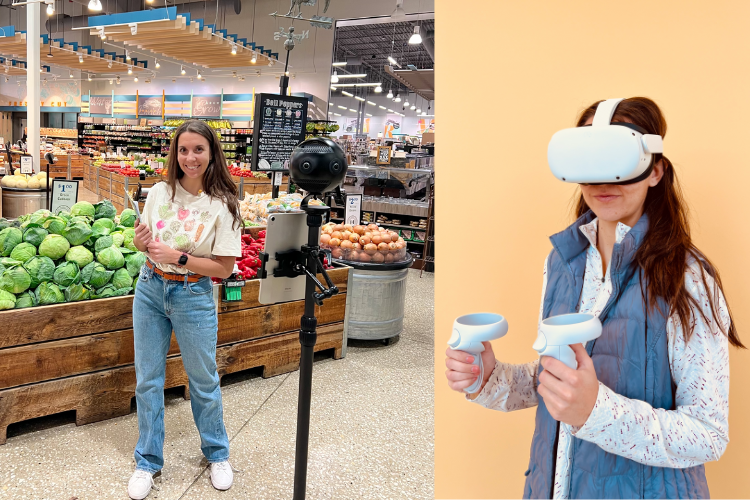
Virtual reality program shares shopping, cooking advice with dialysis patients
Even with the best intentions, it’s not always easy for dialysis patients to choose low-sodium foods. That’s why University of Illinois and University of Arizona researchers created a virtual reality program focused on shopping and cooking with low-sodium ingredients to educate dialysis patients from the comfort of their treatment chairs.
Carson Center offers game-changing expertise to research, industry
Edgeworks, a new research and service facility launched by the Johnny Carson Center for Emerging Media Arts at the University of Nebraska–Lincoln, is helping scientists, inventors and entrepreneurs transform cutting-edge concepts into game-changing reality.
UTEP Faculty Launch Research Lab to Support Human Performance
Professors at The University of Texas at El Paso have launched a new industrial engineering lab focused on supporting human performance and behavior in various application areas. Projects include supportive exoskeletons for high-strain occupations and virtual reality that simulates high-stress environments.
Virtual Reality Simulation Improves PICU Nurses’ Recognition of Impending Respiratory Failure
Cincinnati Children’s Hospital Medical Center used virtual reality training to teach clinical assessment skills and improve novice nurses’ recognition of pediatric respiratory distress. Months later, nurses in the VR group were significantly more likely to correctly recognize impending respiratory failure, identify respiratory distress without impending respiratory failure, and recognize altered mental status.

Podcast: Coaching, skill acquisition and virtual reality in sport
Dr Rob Gray (Associate Professor in Human Systems Engineering at Arizona State University) talks about coaching in sport as well as skill acquisition in baseball and the future of virtual reality in sport
Researchers take new ‘mixed reality’ headsets for a spin
Among the buzziest consumer technologies right now are “mixed reality” or “spatial computing” headsets that convincingly blend views of the real world with digital content.
American Academy of Ophthalmology and FundamentalVR Collaborate on Virtual Reality Initiative to Improve Ophthalmic Training Around the World
The American Academy of Ophthalmology has teamed up with FundamentalVR, a leader in virtual reality (VR) medical training, for their Knights Templar Eye Foundation (KTEF) Pediatric Ophthalmology VR Simulation Program.
Chulalongkorn University’s Education Professor Wins Best Woman Inventor Awards in iCAN 2023
Chulalongkorn University congratulates Assoc. Prof. Dr. Racchaneekorn Hongphanut, Department of Curriculum and Instruction, Faculty of Education, Chulalongkorn University, on winning the Best Woman Inventor Awards in iCAN 2023 for the project titled “Metaverse Historicovator for History Learning Media to Promote Self-Directed Learning in The Bani Era” at the 8th International Invention Innovation Competition in Canada, iCAN 2023.
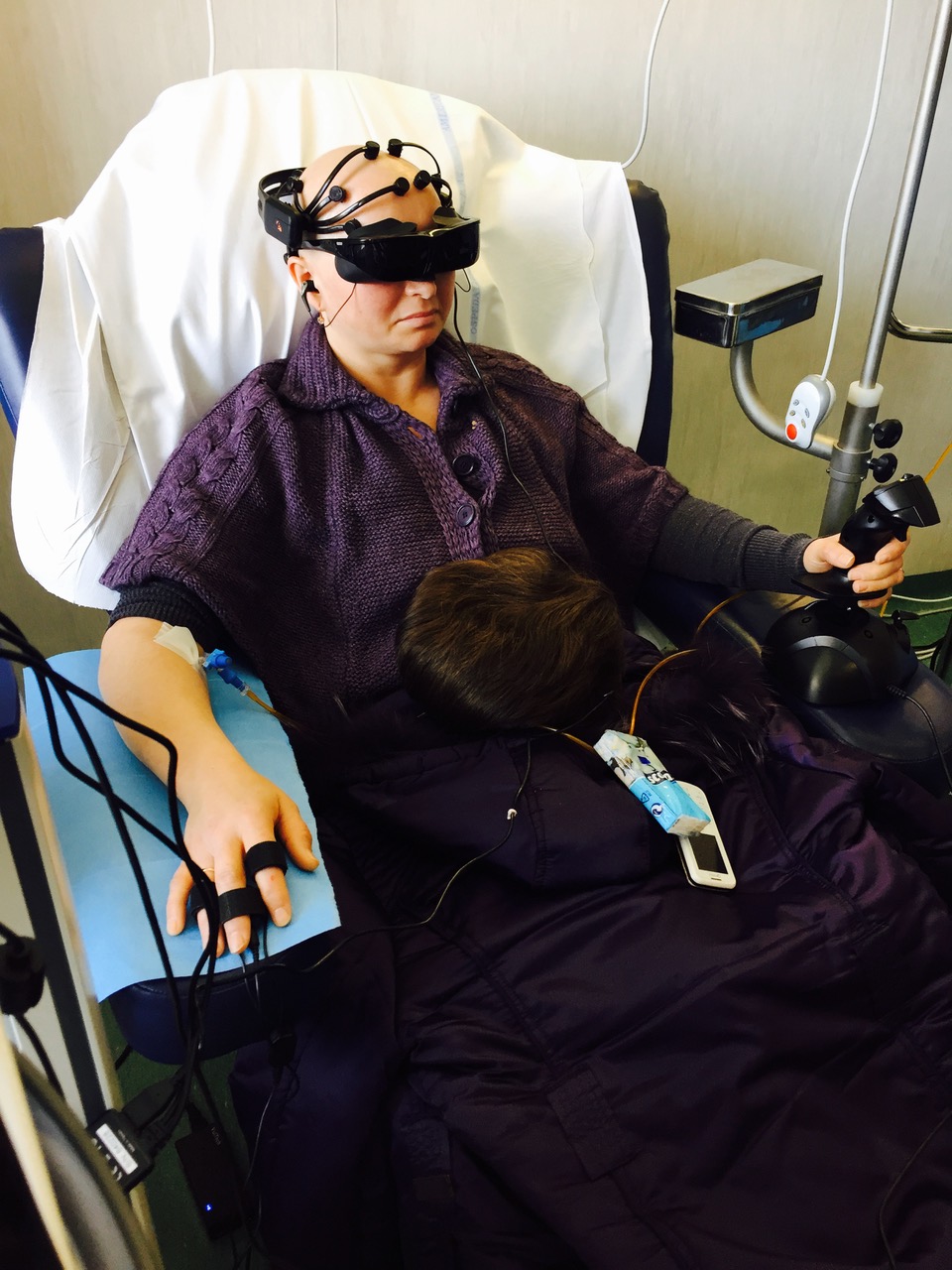
Virtual Reality Study Reveals Link Between Sense of Presence and Cognitive Abilities
A groundbreaking study published in *Scientific Reports, a Nature portfolio scientific journal, has shed light on the intricate relationship between the sense of presence in virtual reality (VR) environments and cognitive abilities.
Hulk Smash! New VR ‘Superhero Therapy’ crushes chronic pain
We’ve all heard of the Incredible Hulk, the green-skinned, muscular superhero with limitless strength. So, imagine what you could do if you could assume his persona and power?
Cybersickness more likely to affect women, ongoing research to understand why
An interdisciplinary team of Iowa State researchers find women experience cybersickness with virtual reality headsets more often than men. Their ongoing work explores why this difference exists and methods to help people adapt.
Researchers explore why some people get motion sick playing VR games while others don’t
The way our senses adjust while playing high-intensity virtual reality games plays a critical role in understanding why some people experience severe cybersickness and others don’t.
FAU, Virtual Planet and City of West Palm Beach Unveil Groundbreaking Virtual Reality Experience
The multidisciplinary team created a virtual simulation of the devastation that a Category 5 hurricane and sea level rise could have on West Palm Beach. The simulation, produced with 3D technology, reveals the destruction that could occur in Osprey Park and the surrounding communities, highlighting the threat to the coastline and potential solutions for coastal areas.
Virtual fitting rooms can be a double-edged sword
Virtual fitting rooms can cut down on returns and nudge hesitant online shoppers to click the checkout button. But findings from a recently published study indicate the technology could backfire on retailers if they assume consumer interactions are uniformly positive. The authors provide several recommendations based on their research.
Technology advance paves way to more realistic 3D holograms for virtual reality and more
Researchers have developed a new way to create dynamic ultrahigh-density 3D holographic projections. By packing more details into a 3D image, this type of hologram could enable realistic representations of the world around us for use in virtual reality and other applications.
Chula Offers a New Dimension to Learning about the Past with “The CU Memorial Hall’s VR Program”
Chula’s Institute of Thai Studies and the Faculty of Engineering have worked together to create “The CU Memorial Hall’s VR Program” pioneering the learning of history in three-dimensional virtual reality, rendering modernity to the past and instilling a sense of fun in the new generation.
Eartest by Eartone Application Detects Dementia Risk by Checking the Hearing of Words in Thai language
The Faculties of Medicine and Science, Chulalongkorn University, in collaboration with University College London (UCL), the United Kingdom, together with industrial partner have developed Eartest by Eartone Application that examines hearing with Thai words processing that the public can use to screen dementia by themselves before consulting physicians to help prevent and reduce future risk of dementia.
Can virtual reality help athletes improve their performance?
The Tulane University football program experienced an incredible turnaround season in 2022. One of the programs that contributed to the team’s success was a new, unconventional initiative to strengthen players’ mental game by practicing in virtual worlds using virtual reality…
Virtual reality game to objectively detect ADHD
A virtual reality game offers an objective assessment of attention deficit disorders and may lead to an improved therapeutic approach
Bringing the field to students with ‘Virtual Field Geology’
The Virtual Field Geology project has many goals: to make geology field experiences accessible to more people; to document geological field sites that may be at risk from erosion or development, to offer virtual “dry run” experiences and to allow scientific collaborators to do virtual visits to a field site together. While the pandemic brought new urgency to the project, its developers believe it’s part of a “new normal” for geology research and education.
IU researcher creates virtual reality experiences to aid substance use disorder recovery
Researchers are combining psychological principles with innovative virtual reality technology to create a new immersive therapy for people with substance use disorders.
Smelling in VR environment possible with new gaming technology
An odor machine, so-called olfactometer, makes it possible to smell in VR environments. First up is a “wine tasting game” where the user smells wine in a virtual wine cellar and gets points if the guess on aromas in each wine is correct.
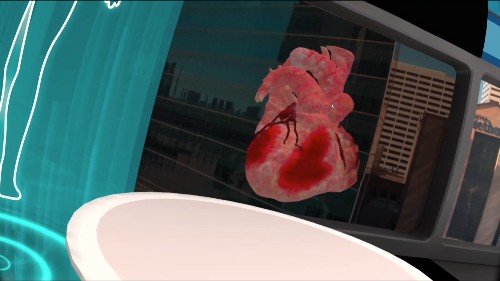
Houston Methodist enters the metaverse with launch of new MITIEverse™ app
Exploring the heart from the inside out is now possible with a new app from Houston Methodist.
Researchers explore how people adapt to cybersickness from virtual reality
Initial results from an Iowa State study indicate cybersickness symptoms from virtual reality improve with just three 20-minute sessions over a week, but a higher percentage of women and people who are prone to motion sickness have a harder time adapting.
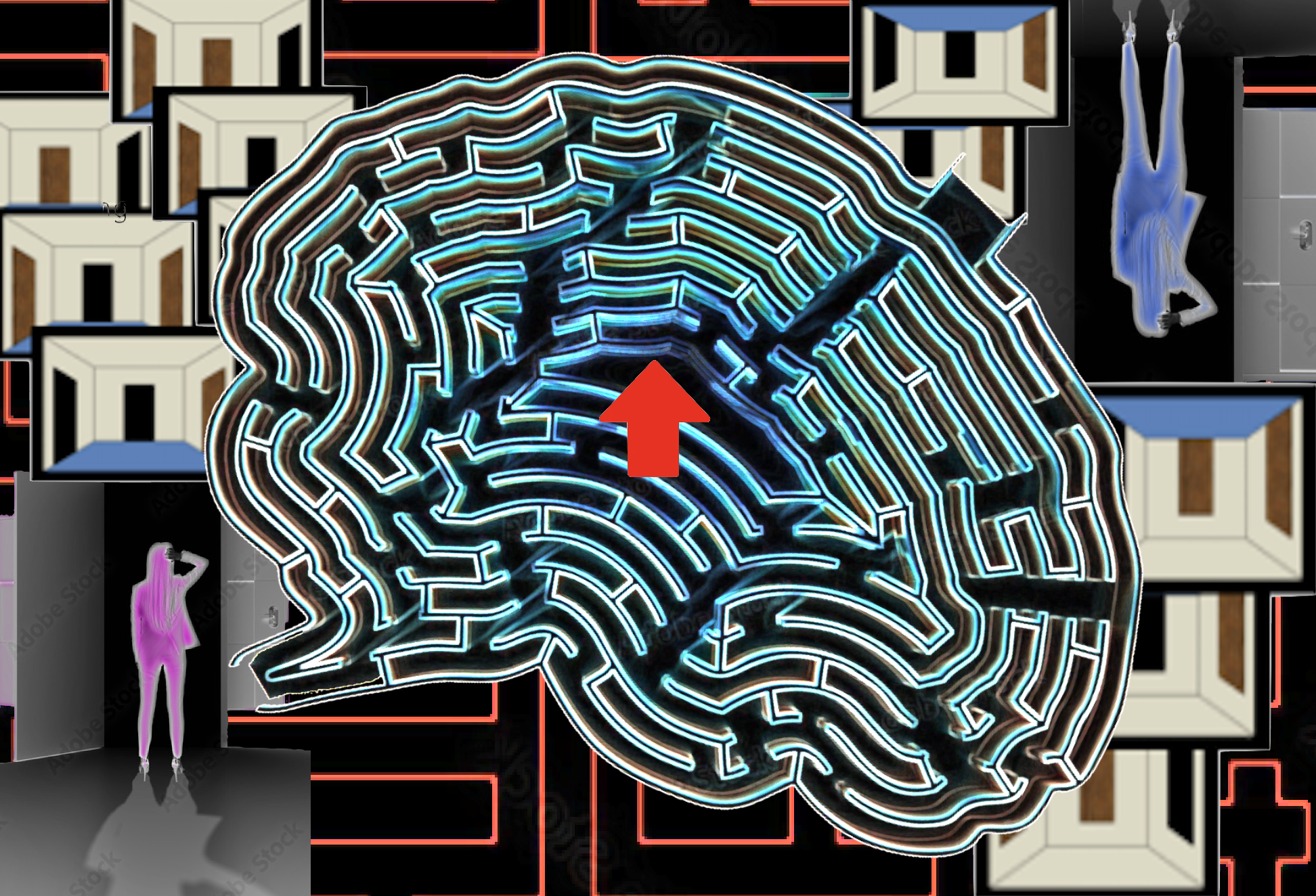
When in doubt never fear, Al is here
Partial-observation mazes in virtual reality have been used to find that they can decode from brain activity the subjects’ abilities to predict their positions and scenes within the maze, as well as the degree of confidence in their predictions. Brain activity is measured via functional magnetic resonance imaging, or fMRI, while subjects are engaged in a VR maze game. Despite having no knowledge of the final destination, subjects appear to be able to use their predictions and map memory to help estimate their positions in the maze and choose the right way to proceed.
JMIR Medical Education | Digital Teaching in Medical Education: Literature Review
These JMIR Medical Education authors used a bibliometric approach to unveil and evaluate the scientific literature on digital teaching research in medical education, demonstrating recurring research topics, productive authors, research organizations, countries, and journals.
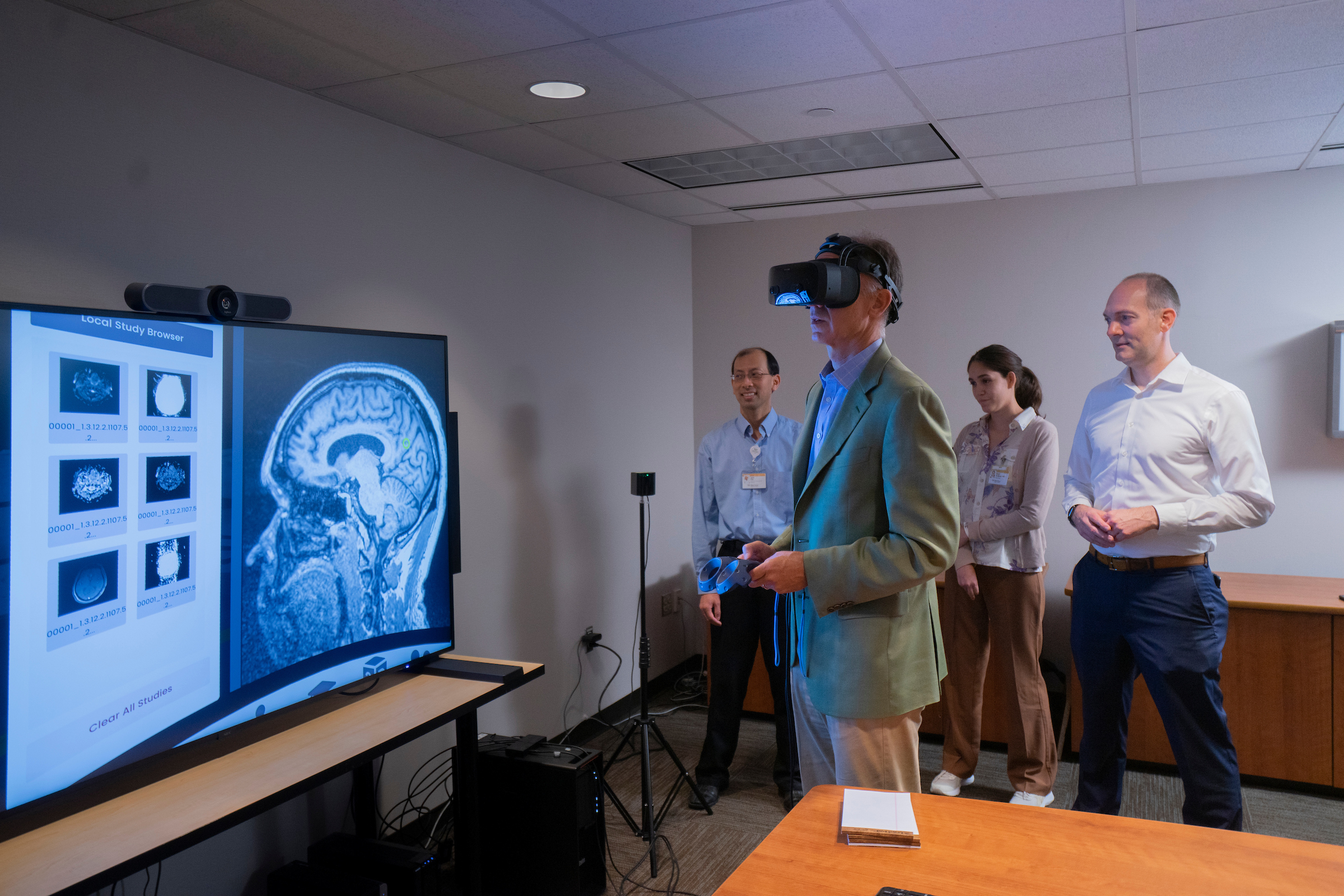
Wake Forest University School of Medicine Collaborating with Physicians in Ecuador on Virtual Reality Radiology Project
Neuroradiologists at Wake Forest University School of Medicine have begun a pilot study testing the use of virtual reality (VR) systems to remotely read MRIs and other medical images.
“The wonderful thing about this is that it’s a collaborative environment with people who can look at medical images at the same time, regardless of where they are in the world,” Burdette said. “We are able to interpret images in incredible detail while communicating with the referring clinicians who are seeing the same images in real time, which is just not possible in a traditional reading room in the hospital.”
Which companies could become Maestros of the Metaverse?
A new study by world leaders in patent data has revealed the companies that are poised to become the “Maestros of the Metaverse”, conducting the most innovations to underpin the 3D virtual reality space of the near future.
3D virtual reality models improve ‘trifecta’ outcomes of prostate cancer surgery
Providing surgeons with 3D virtual reality (VR) models for surgical planning can help to achieve the critical “trifecta” outcomes of prostate cancer surgery: controlling the cancer while maintaining patient’s sexual function and urinary continence, suggests a study in The Journal of Urology®, an Official Journal of the American Urological Association (AUA). The journal is published in the Lippincott portfolio by Wolters Kluwer.
VR-Integrated Rehab for Cancer Patients Shows Potential in Research Review
Oncology researchers using Virtual Reality (VR) in the treatment of cancer patients have published a review of the existing literature regarding the application of this technology for the rehabilitation of cancer survivors.
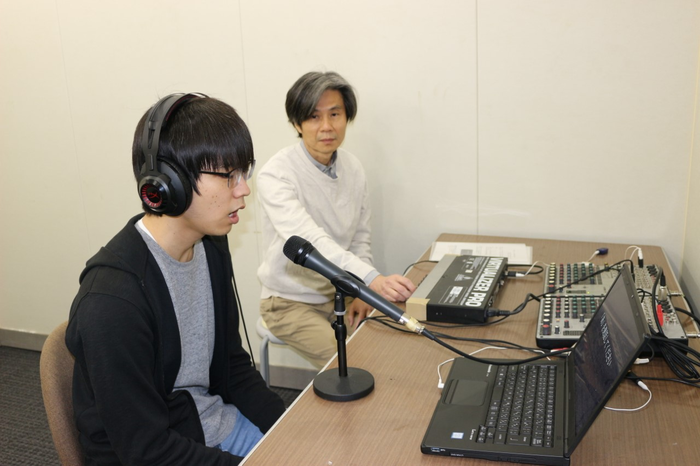
Link between recognizing our voice and feeling in control
New study on our connection to our voice contributes to better understanding of auditory hallucinations and could improve VR experiences.
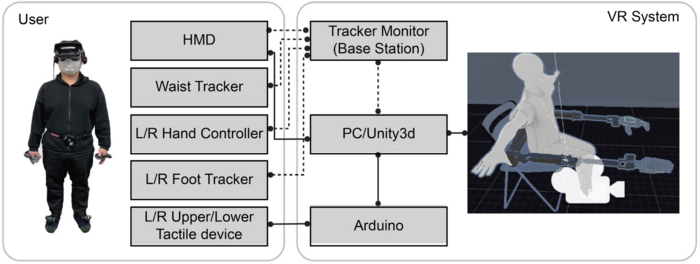
Supernumerary Virtual Robotic Arms Can Feel Like Part of Our Body
Research teams at the University of Tokyo, Keio University and Toyohashi University of Technology in Japan have developed a virtual robotic limb system which can be operated by users’ feet in a virtual environment as extra, or supernumerary, limbs.
Virtual reality gives humans a turtle’s-eye view of wildlife
A virtual reality simulation designed by a University of Oregon professor could help spur people to environmental action. Participants in Project Shell don a virtual reality headset and take on the body of a loggerhead sea turtle, sporting flippers instead of arms. During a 15-minute immersive experience, they journey from a hatchling to an adult turtle, dodging hazards like ships and wayward fishing gear.
Training Virtually Can Reduce Psychosocial Stress and Anxiety
Previous research has described how virtual training produces acute cognitive and neural benefits. Building on those results, a new study suggests that a similar virtual training can also reduce psychosocial stress and anxiety.
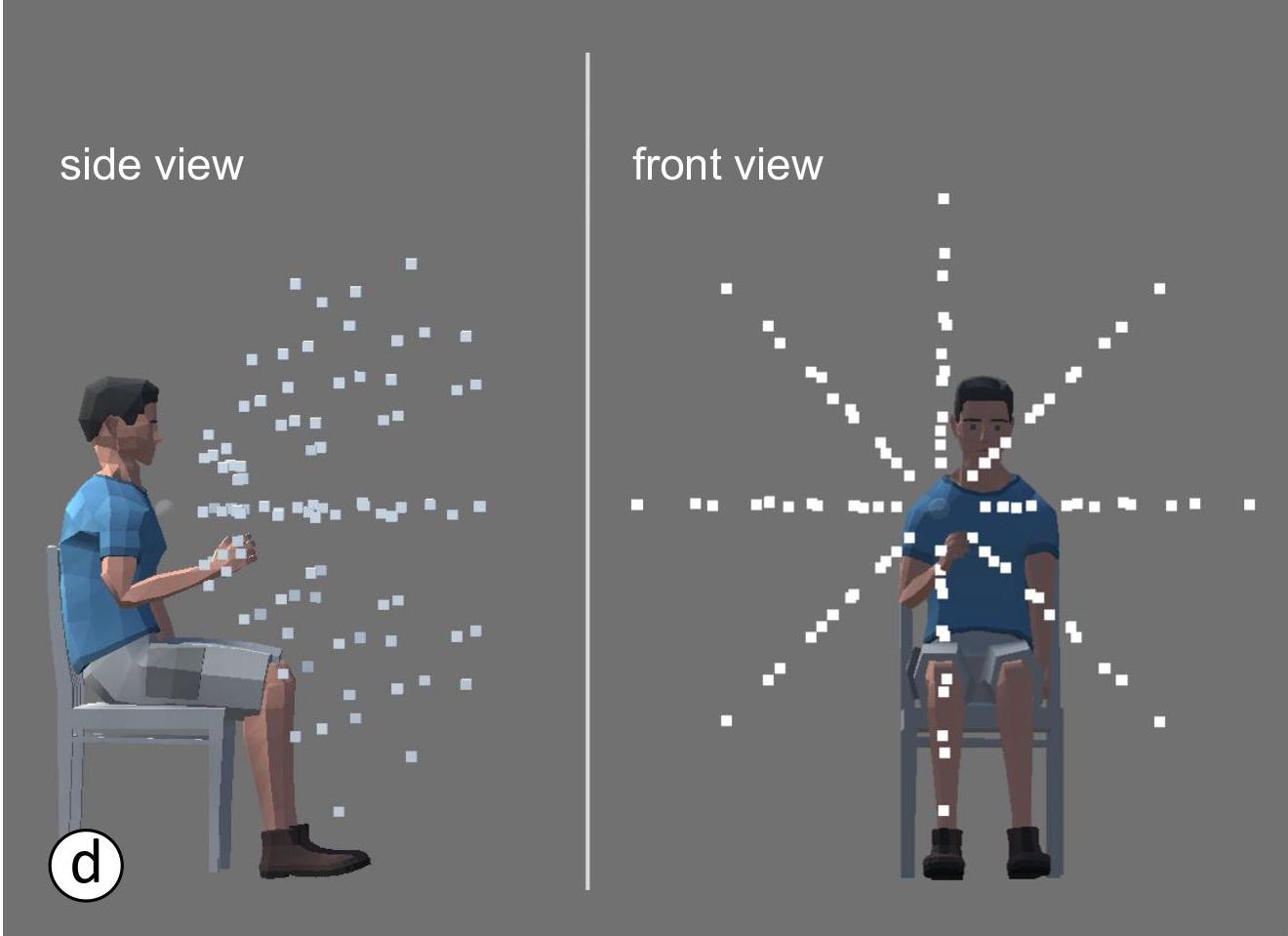
Designers find better solutions with computer assistance, but sacrifice creative touch
A computer-guided approach to design can propose more solutions and balance out human inexperience and design fixation.
New class explores learning in the metaverse
Students and faculty members discover some of the possibilities for the future of education through the University of Miami’s first course conducted in virtual reality.
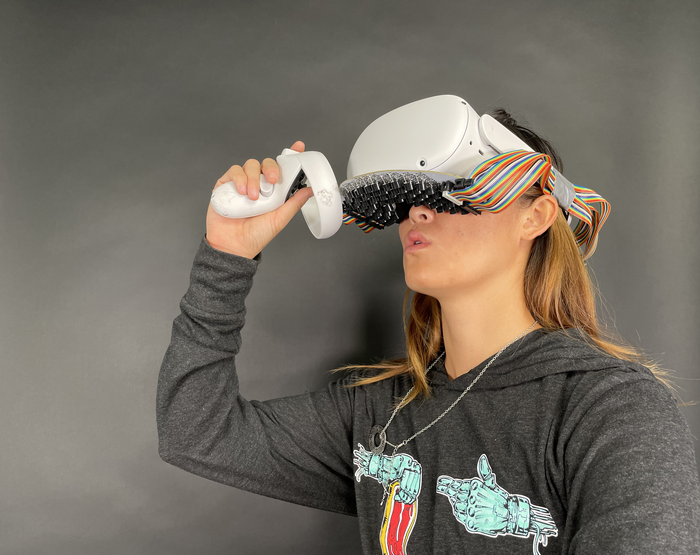
Over the lips, through the gums, look out gamers, here it comes — or so it seems
Lips are famously sensual but, together with the gums and tongue, they are also surprisingly sensitive, second only to the fingertips in nerve density.
Virtual Reality Could be the Answer to Worker Shortages at Poultry Plants
The Georgia Tech Research Institute’s (GTRI) Agricultural Technology Research Program (ATRP) is incorporating automation solutions, specifically virtual reality (VR), into poultry processing to boost efficiency and enhance worker safety.
Immersive VR: empowering kids to survive in fire, flood, and war
When you live in the driest State in the driest country in the world, bushfires are an unfortunate, and all-too-regular part of life. Learning how to survive such emergencies is important for all people, but especially for our youngest citizens
Community Health Pioneer McNeal Receives AACN Award
Gloria McNeal, of National University, will receive the 2022 AACN Pioneering Spirit Award in recognition of her efforts to bring healthcare directly to those most in need and introduce telehealth and remote monitoring to critical care.
The effects of embodying wildlife in virtual reality on conservation behaviors
AbstractEfforts to mitigate environmental threats are often inversely related to the magnitude of casualty, human or otherwise. This “compassion fade” can be explained, in part, by differential processing of large- versus small-scale threats: it is difficult to form empathic connections…
A Game Changer: Virtual Reality Reduces Pain and Anxiety in Children
For nearly two decades, Jeffrey I. Gold, PhD, an investigator at The Saban Research Institute of Children’s Hospital Los Angeles, has been investigating the use of virtual reality (VR) as a technique to help children undergoing painful medical procedures. His research shows that the technology can have powerful effects. VR works so well that Children’s Hospital Los Angeles now offers it routinely for blood draws.
Bringing the jury to the crime scene via a 3D headset
A new study published by the University of South Australia provides overwhelming evidence in favour of using virtual reality in the courtroom, effectively dropping jurors right in the middle of a car accident or murder scene.